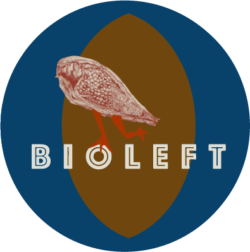Yesterday, our colleague Almendra Cremaschi shared the Bioleft project in the framework of a series of talks organized by the Injerto / Textil vivo project, a textile experimentation laboratory that is being carried out in Medialab Prado to produce five projects there who are imagining and prototyping the textile of the future. Ana Andrés Cristóbal, a member of Injerto / Textil vivo, highlighted her clear focus on textile sovereignty, understood as “the ability of citizens to gather power over the creation of their own textiles, and remember and renew the artisanal processes that unite us with the traditional ones to rethink the future ”.
Why talk about seeds in the context of a textile project?
As Almendra commented on this occasion, “seeds are essential not only for agriculture but for culture itself; they are not only linked to food but also to intercultural ties and also to the textile industry ”.
A large part of the fibers used for the textile industry are of vegetable origin, mostly from cotton. But its production is characterized by great concentration and exclusion. In the world, 80% of cotton cultivation is transgenic, while in India and Argentina the figure rises to almost 100%.
Although the seeds of this crop, like many others, have been exchanged and improved for centuries by farmers based on different characteristics such as the amount of fiber but also adaptation to the local environment, in the 60s the first form emerged. of appropriation of cotton seeds by breeders: the hybrid. This technology prevents the seeds from being replanted, since they would lose the characteristics that make them advantageous compared to non-hybrid varieties, forcing the purchase of seeds for each season.
In 1998, Monsanto patented the first transgenic cotton with a Bt event, and with it came many regulations: patents prohibit farmers from replanting these seeds, but also the development of new varieties from their improvement. In 2000, he also patented the first cotton with an RR event, which makes it resistant to glyphosate; the farmers were not only forced to buy the seed year after year but also to apply the herbicide mentioned in their crops. In 2006 the first cotton was patented with both Bt and RR events. Between the 2010s and 2020s, only four companies dominated the global seed market. Today 80% of the area planted with cotton comes from transgenic seeds, in the hands of those few companies. Also, GMO cotton is worth four times more than non-GMO cotton.
How can Bioleft contribute to addressing this problem?
The patents affect not only cotton, and not only species for textiles, but also seeds for food. Those who produce organically, agroecologically or bi-dynamically, for example, find themselves with a lack of seeds in the market adapted to their cultural practices.
In this context, it is of great importance to promote the local exchange of seeds, as is the case of the Madrid Seed Bank, and initiatives such as the Bioleft project.
Bioleft is a community laboratory where we think about how to generate solutions for these sustainability problems. We have three main tools.
A methodological one, which is based on the participatory governance of the project and the experiments in genetic improvement, of which we have already made evaluations of different genotypes of corn and tomato in conjunction with organic and biodynamic producers, respectively, and we are also planning to advance in sunflower.
Another legal tool, which seeks to address the problem of restricting access to seeds that patenting implies: it is inspired by the open source movement to establish that seeds with a “Bioleft” agreement can be used for whatever as long as access is not restricted either for planting or for further research on them. It is a viral clause that is reproduced together with the seed, that is, it is transferred to its progeny and the improvements derived from it. It works in parallel with seed regulations.
Finally, a technological tool based on a web platform, which allows to collectively generate information about the seeds and generate traceability, to monitor and react in the event of misappropriation.
Future projections
Bioleft has advanced a lot, the first results are already in sight, and they range from the growing link with state agencies that seek to address seed problems -such as the generation of regulations according to the needs of the most sustainable agriculture-, to the evident empowerment of the actors that are part of the project from constant collective reflection.
From the presentation of Bioleft, Medialab Prado and the Mataderos Seed Bank began to think about the possibility of starting a collection of dye seeds and raw materials such as flax or esparto.
There is still much to do, the initiatives that seek to build more sustainable futures face multiple challenges. However, collaboration with spaces such as Medialab is not only a great incentive, but a great sign that it is necessary to strengthen ties in pursuit of a systemic and innovative approach to achieve collective dreams.
